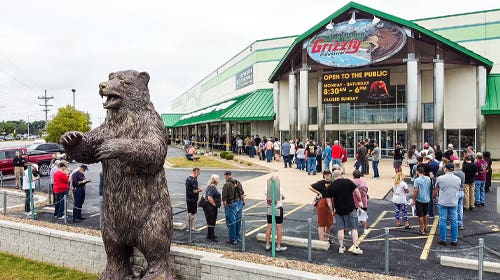African blackwood is rare and a tough cut
When it comes to the combination of tonal qualities, appearance, density and expensive price, African blackwood is in a league of its own. The trees grow primarily in Mozambique and…
When it comes to the combination of tonal qualities, appearance, density and expensive price, African blackwood is in a league of its own. The trees grow primarily in Mozambique and Tanzania and the main uses of the wood are for woodwind instruments, turnings and occasionally small pieces of furniture.
{loadposition position10}
"It is a Dalbergia (Dalbergia melanoxylon), one of the most scarce rosewoods," says Rocky Mehta, owner of West Penn Hardwoods in Olean, N.Y. "The logs are small and usually have a big hole in them. You get a lot of cracks, so really you can't get much lumber out of them. It does a number on saw blades for sure. From what I have heard, this is one of the species that may go on CITES very soon. If not in two years, then in four years."
African blackwood, also known as grenadillo and mpingo, is a short tree that normally grows to about 25' and rarely reaches 40'. The tree can be easily recognized by its fluted trunk. It grows primarily in the savanna areas of East Africa. The most prolific region for African blackwood is Mozambique. The wood is an excellent tonewood for guitars and woodwind instruments such as clarinets, flutes and bagpipes. It's also popular for knife handles, duck calls and chess pieces. The tree is the only Dalbergia species on the African continent, excluding the island of Madagascar.
"It is a very dry rosewood," Mehta says. "It is not like cocobolo, which has a lot of moisture in it. Where it grows in Mozambique, there is a very dry climate. It's not a bush; it looks like a bigger mesquite tree. There are fewer and fewer companies dealing with it now in Mozambique and Tanzania because the permits are getting to be very difficult to obtain."
"The biggest demand is in the musical industry, but more turning-grade [material] is being produced than musical grade," says Fabs Corte of Cormark International in Weaverville, N.C. "I'd say that most of what we sell is for the turners. Although if we could get more [musical grade], we would sell more. We also sell a little bit for furniture, but it's so expensive, people are using it in very limited amounts like inlays, accenting, that type of thing."
"It's very similar to ebony [in terms of] sizes, but it is great stuff - nice and dense," says Steven King of All Righteous Woods in Rowley, Mass. "It's better than Gabon ebony because it is not as brittle."
The heartwood is nearly black, which is why it is often confused with ebony (Diospyros dendo). The whitish-yellowish sapwood is narrow. African blackwood is extremely heavy and hard, with a specific gravity of 1.08. It is straight-grained and has a fine texture. It has a low luster and is slightly oily.
"It's not uncommon to get less than a 10 percent yield," says Myles Gilmer, owner of Gilmer Wood Co. in Portland, Ore. "But it is a fantastic wood, it's just gorgeous stuff. It takes a beautiful polish and it's just great stuff to turn."
"It's a species we were harvesting at our own facility in Mozambique," Corte says. "But we found out that the guys didn't have the equipment to process the logs the way we could, so we decided to do it here. When you are getting an 8 percent recovery on your logs you realize why the stuff is so bloody expensive. The costing is because you have to process so much to get so little out of it."
The tree is filled with minerals, dirt and grime, which makes the cutting process extremely challenging.
"It's awful to cut," Gilmer says. "You spend all your time changing band-saw blades. If at all possible, I have the stuff cut overseas. I have a couple of huge logs, they're probably close to 3' in diameter and about 6' long and there's no one who is going to cut them. What we're going to have to do is probably chop them into 12" to 15" lengths with a chainsaw and then saw them on our vertical band saw. It is just brutal on machinery."
"It's such a tough wood," Corte adds. "Several years ago, we brought in three container loads of logs. We went through so many band-saw blades. I think it was one band-saw blade for every 14 lineal feet. So then we thought we'd try the expensive blades and I think we got an extra couple of feet out of them, but we paid so much more for the blades. It has a lot of minerals in it and also, because the log is fluted on the inside, it tends to pick up a lot of dirt and grime. You hit one of those pockets and it just disintegrates your blade."
African blackwood is usually sold by the pound and prices vary widely as availability has become more difficult.
This article originally appeared in the December 2010 issue.







